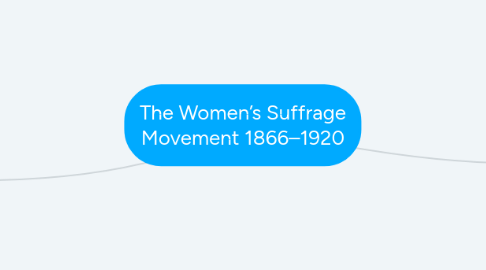
1. Anti Suffragists and Influence
1.1. was a political movement composed of both men and women that began in the late 19th century in order to campaign against women's suffrage in countries such as Australia, Canada, Ireland, the United Kingdom and the United States. Anti-suffragism was a largely conservative movement that sought to keep the status quo for women and which opposed the idea giving women equal suffrage rights. It was closely associated with "domestic feminism," the belief that women had the right to complete freedom within the home. In the United States, these activists were often referred to as "remonstrants" or "antis."
1.1.1. They were barely influential, a large scale of the population back then agreed that women should deliberately participate more in the “real” world. Obviously, there were some small amount of people who were completely against the suffragists.
1.1.2. The anti-suffrage movement was a counter movement opposing the social movement of women's suffrage in various countries. It could also be considered a counterpublic that espoused a Conservative defense of the status quo for women and men in society. As a counter movement, the anti-suffrage movement didn't gain traction or start to organize until the women's suffrage began to challenge the current social order.
1.1.2.1. Even though there was some anti-suffragists the suffragist movement was a major success to a large extent,
1.1.3. Women who seeked work and wanted more participation in the real world, women who wanted to be more than just “housewives”, women were beginning to feel like they could have a good impact in the worlds big’s scheme of thing.
2. To a extensively large extent the suffrage movement was a national movement. The reason behind this is because Susan B Anthony and Elizabeth Cady Stanton worked really hard to make sure that they could recruit any women across the country.
2.1. Campaign methods did go through some changes for example instead of having a goal to directly get your message to all the population across the country, you would directly work with the people of each state and go state by state, first knocking the ones with the most population.
2.1.1. The economy of the period depended intensely on supposed "sex-composed" work, or work that businesses normally allowed to one sex or the other. What's more, the work most straightforwardly connected with guys, particularly fabricating in substantial enterprises like steel generation, confronted the most profound dimensions of lay-offs amid the Great Depression.
2.1.2. Leaders like Susan B.Anthony and Elizabeth Cady Stanton were really important for the development of the movement that lasted from 1866 all the way to around the 1920’s, they were really important because they were viewed as public figures that had spoke for all the women who supported the movement.
2.1.2.1. Ex- president Woodrow Wilson was really important to the suffrage campaign because Woodrow Wilson was the one who gave women the right to vote which was a huge win in the Suffragette's eyes because they were now officially seen as citizens. Woodrow WIlson’s mind was changed when he noticed that women really helped a lot of during war time.
2.1.3. Ladies essentially worked in administration businesses, and these occupations would in general keep amid the 1930s. Administrative laborers, educators, attendants, phone administrators, and domestics to a great extent looked for some kind of employment. In numerous occasions, bosses brought down pay scales for ladies specialists, or even, on account of educators, neglected to pay their laborers on schedule. In any case, ladies' wages remained an essential segment in family survival. In numerous Great Depression families, ladies were the main providers.

